Conformity, Identity, and Demons: Inside the World of “KPop Demon Hunters”
Written by Vi-Anh Nguyen | July 11, 2025

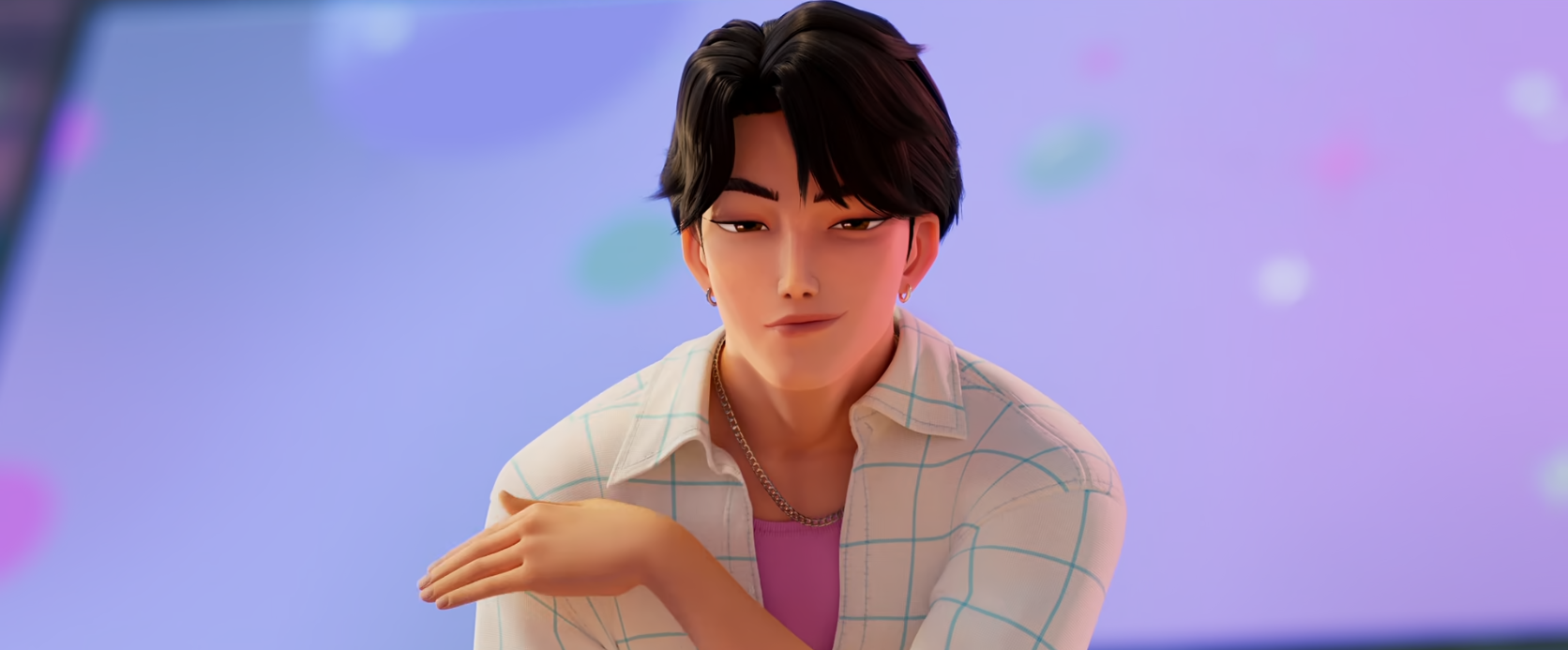
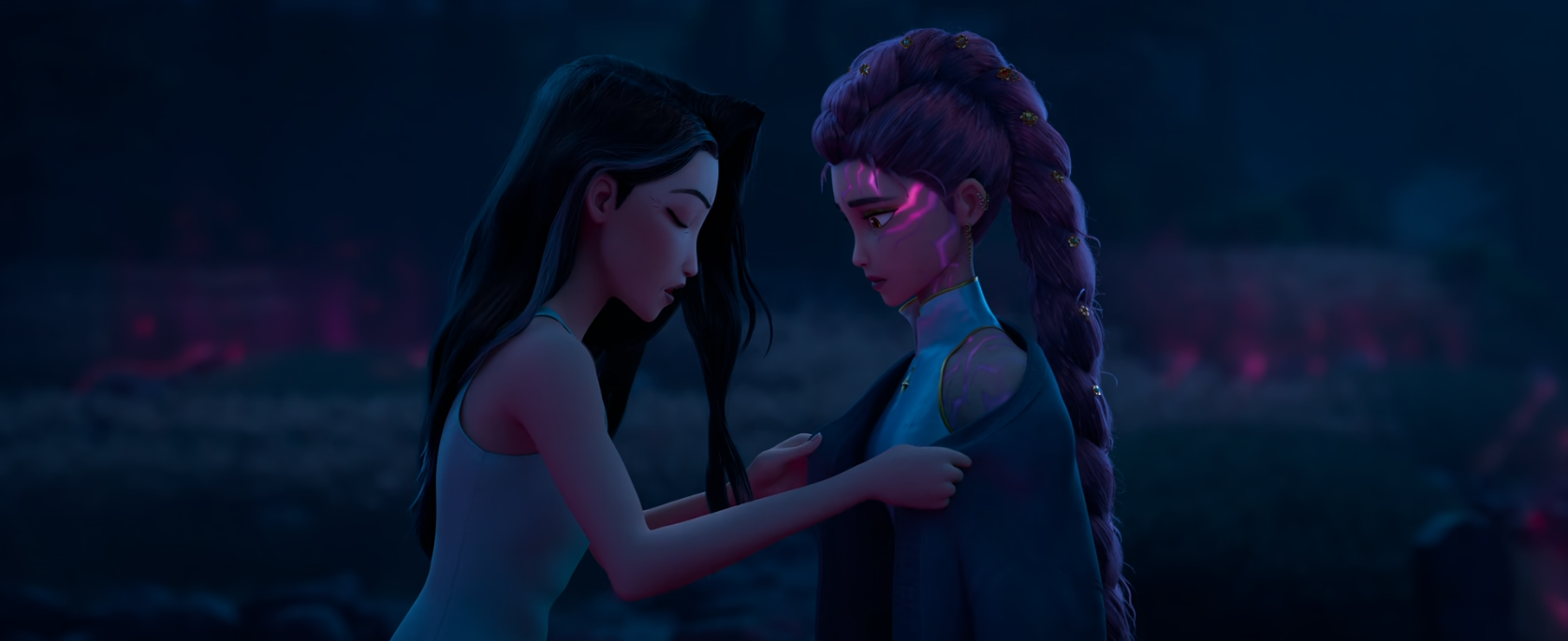
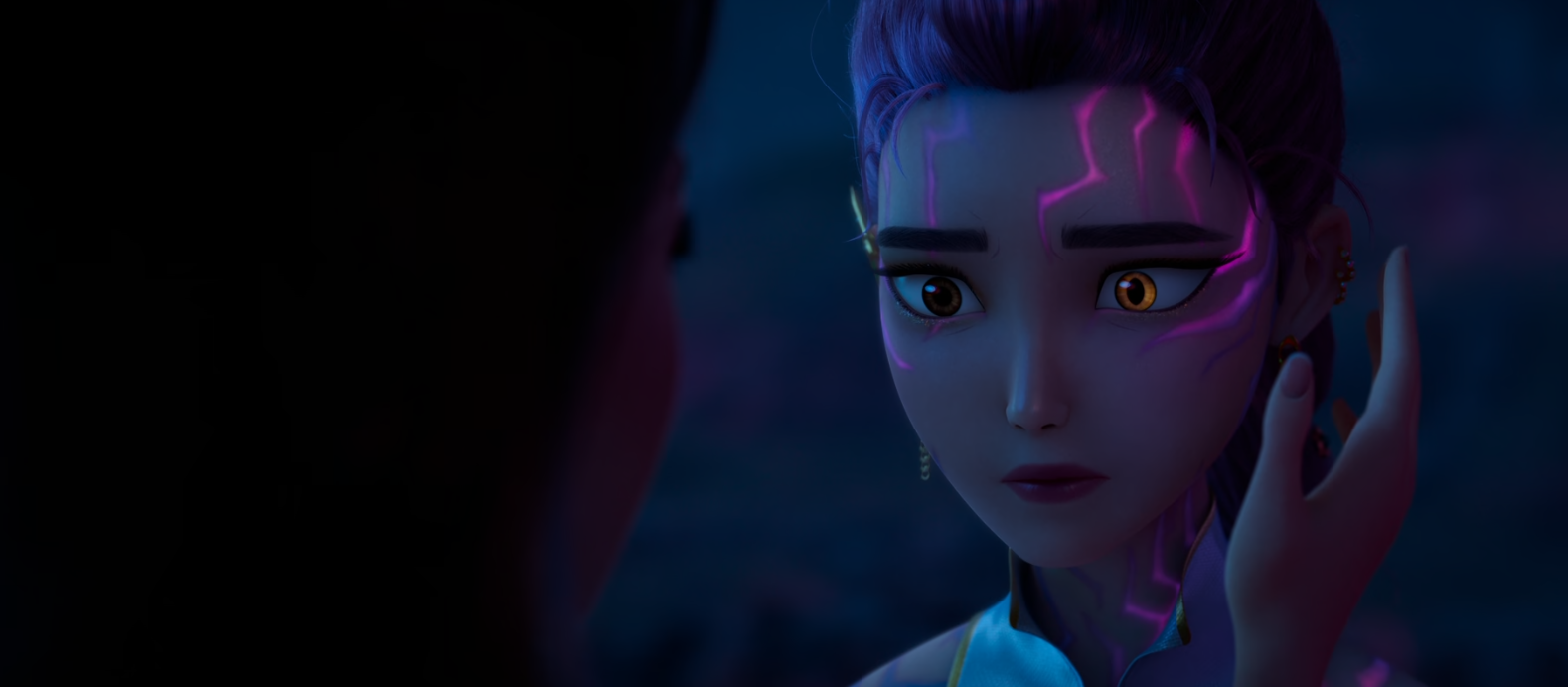
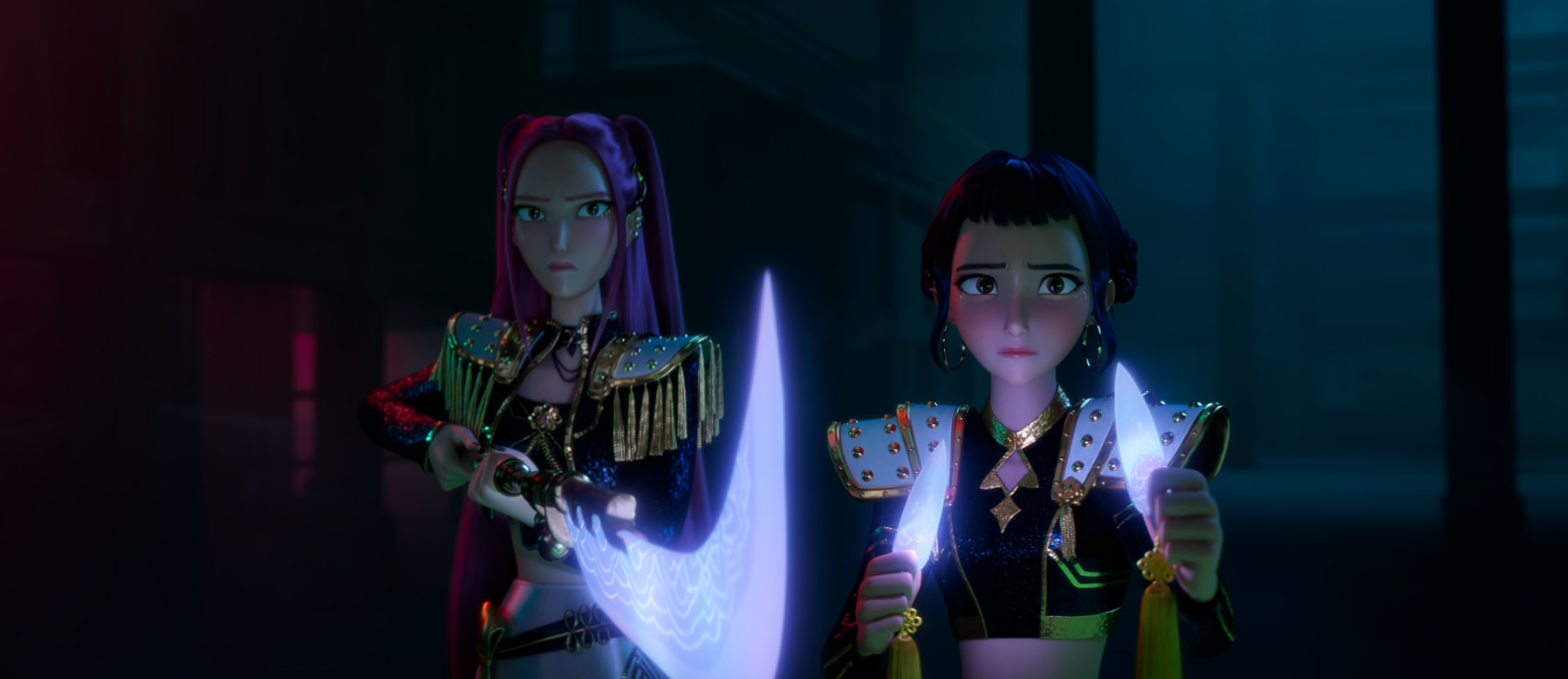

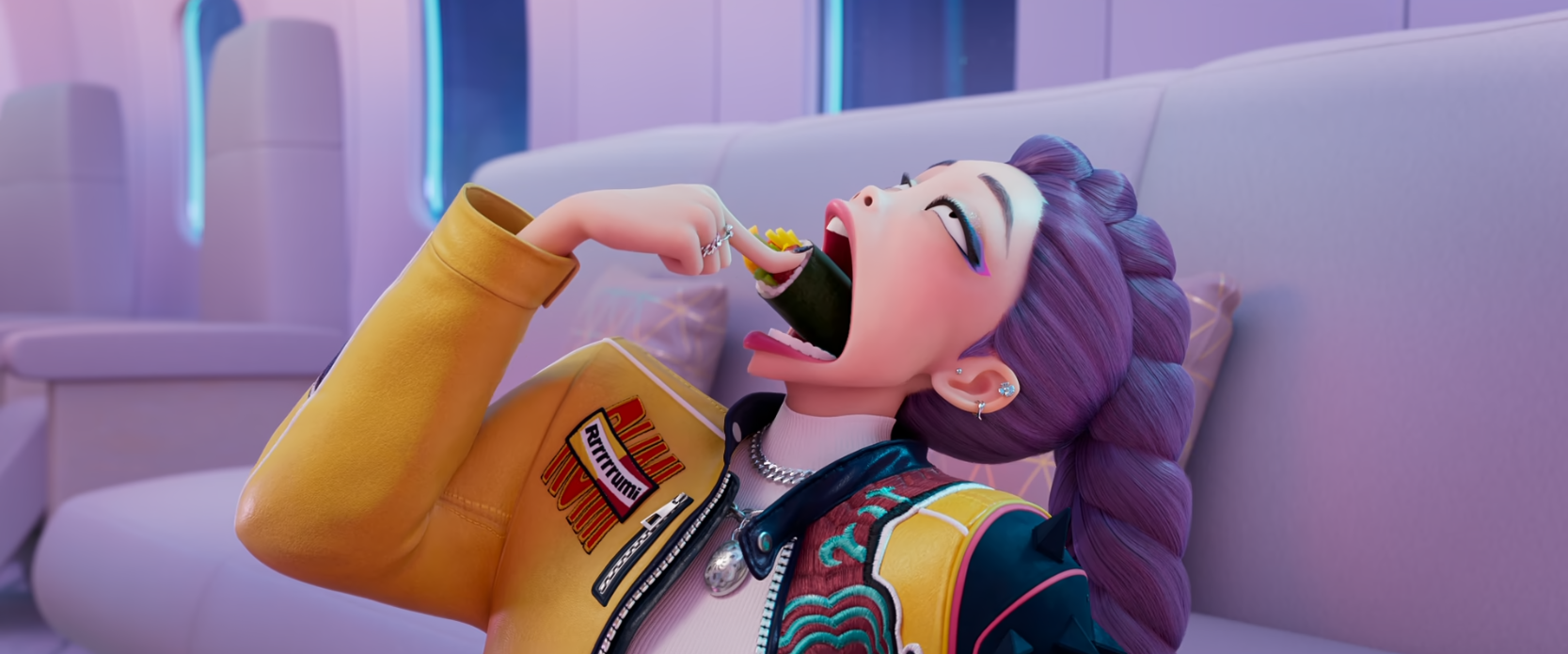
I wouldn’t have expected a movie with such a simple and silly title like KPop Demon Hunters to take the world by storm—and drag me into its fandom—but here we are. With the film itself being just 95 minutes, it made sense to me that the overall premise was going to be mostly full of familiar tropes. But the team managed to jam-pack so much into it! I felt fully engaged throughout the entire movie. There was always something actively going on.
Although, for me, that specific aspect did create some plot points that could have been explored a bit more. I’ll explain more about that once I get into spoiler territory later. But right now, I’ll say to a marginal degree, how much the film crammed into that short runtime did affect some of the pacing. Small, crucial moments felt rushed for the sake of runtime. It wasn’t obvious, but it still bothered me somewhat.
Overall, the unique style of animation and design was such a visual treat! Sony Animation has really come so far since 2017’s Emoji Movie. The Spider-Verse franchise really pushed the studio to try something new, eventually giving us gems like 2021’s Mitchells vs. The Machines, and now, the current fan favorite, KPop Demon Hunters. And I’m glad that things are getting more experimental—especially in the medium of animation. The animation in KPop Demon Hunters is so fun to look at, with the slightly more hybrid 2D-3D look we see in some scenes that clearly take inspiration from anime and manga.
It’s not entirely animated “on ones” like what I see with Pixar—which, for me, I enjoy. Plus, the fact that the movie’s fight sequences are actually in ones helps make these scenes pack more of a punch on screen. I can feel more of the impact with the fight scenes being on a different frame rate, because I know the animators are going all out with them—in contrast to the more mundane scenes that are in twos. And paired with the movie’s interesting designs, it creates an exciting film with such visual distinctiveness. This, for me, makes what Sony Animation is doing stand out so much more among big studio animation.
Now I’m going to go into more SPOILER territory, so turn back now if you haven’t seen the movie:
The beginning of the movie is excellent in getting me, as the viewer, immediately engaged. There are a lot of fun expressions and dynamic angles I did not expect to see in a 3D film like this. Some of my favorite examples include when the girls were carbo-loading before the big concert, the great first song, and all the action—from handling the demons getting their covers ruined, to the plane getting destroyed, and the girls landing in the concert. I only ever saw such crazy visuals in anime or comic book films.
However, despite how well-executed the beginning was, I have some issues with the pacing. For example, towards the end of the movie, how Mira and Zoey resolved their issues with Rumi after they found out Rumi is half-demon felt like it resolved itself in just two scenes. With a revelation like that, I wanted to fully see Mira and Zoey come to terms with what their best friend had been hiding from them.
Another issue I have with the story progression is Rumi’s ideology about demons getting shaken after her first conversation with Jinu. We only got one shot of that—when Rumi had a demon at swordpoint and asked it if Gwi-Ma was forcing them to attack people. I didn’t get a sense that Rumi was experiencing an organic change. At least one or two more demon interactions would have made Rumi’s ideological shift feel a little bit less forced. As I stated before, my issues aren’t major. However, if these issues were addressed, I think the movie would have been perfect.
To tie into that, I would say the same thing about Rumi’s last scene with Celine in the film. They’re clearly very familiar with each other, since Celine helped raise Rumi. However, even from the small snippets we got—from Rumi contemplating in Celine’s office about telling her friends about her demon heritage, to that last scene with Celine when Rumi begs her to “do what she should’ve done a long time ago”—I wanted to see more from Celine. She’s an important figure to Rumi, and this is, for the most part, Rumi’s story. So why wasn’t she in more of the movie?
Moving on to a related note, Celine and Rumi’s dynamic, although brief with fantastical demon-related elements, showed me something I see reflected in other Asian films—but also in real life: that sense of forced conformity that the adult figure teaches their child. How Celine couldn’t accept all of Rumi, and how she justified trying to hide Rumi’s demon heritage (and by extension, teaching her to do so herself) is an interesting metaphor for conformity—especially in a hyper-conformist society like East Asia.
I’m Vietnamese American, so I don’t have complete context on the nuances of how severe conformity can get in East Asia. But consuming enough Asian media content, asking friends and family about how life is different in Asia vs. the U.S., and looking into life there gives me a relative idea of it. You can especially hear this emphasis on conformity in the repeated phrases of hiding your thoughts and fears. From being Asian American myself, I still experience a certain level of conformity in my own family because that feeling of hiding the bad stuff is familiar to me. After all, hiding the bad stuff makes less conflict. And I’m very anti-confrontational, but I’m learning to stand up for myself more—even if slowly.
In the case of the Saja Boys, their first street performance and their appearance on the Spicy Challenge variety show gave me glimpses into how parasocial things are in the K-pop industry. I consume K-pop off and on at best and casually at most, but the factory-like inner workings of the industry are a rabbit hole I find really interesting when I’m in a K-pop-listening kind of mood. The smirk Jinu gave during the Saja Boys’ first street performance—I know it was supposed to be directed at our Huntrix girls—but the way the ajummas (middle-aged or older Korean women, to my understanding) right in front of them reacted reminded me of how fans have those thoughts of, “He was looking at ME!” I’m not sure if that was intentional, but I just found that moment so interesting.
And during the variety show, when both idol groups say things like “We as Saja Boys/Huntrix love you,” it emphasizes something somewhat manipulative in the way they talk to their audience. I find this especially true with some influencers I see today.
The last thing I’d like to say about the Saja Boys is I would have liked to see more screen time from the other members. The movie introduced us to interesting characters, but we didn’t get to know them all that much. I could say the same thing about Mira and Zoey in that regard—but at least those two have proper names. Because the other Saja Boys who aren’t Jinu are mainly identified by their nicknames, I didn’t get a sense of them as people. They didn’t feel like they got much character development at all with how little personal screen time they had. They felt like they were mostly there to show some of the negative aspects of the K-pop industry.
Despite all the criticism, would I recommend the film? Absolutely!
Even with the major flaws of this movie being in the story and pacing, I can still understand the characters and their overall motivations. KPop Demon Hunters is such a fun experience for any movie viewer—especially if you’re here for good vibes. Outside of stylish and appealing visuals and addictive music, the movie KPop Demon Hunters excels in giving viewers a good time.
Go watch it!

